Note: This article was originally posted on ValueQ, where may offer you an impressive discount. Make sure you check ValueQ before you make the purchase.
Xiaomi is expanding its flagship line by announcing the release of two new devices: Xiaomi Mi 8 Lite and Xiaomi Mi 8 Pro. Both smartphones turned out quite interesting, and they show the company’s intentions regarding further actions in the mobile market. However, the Xiaomi Mi 8 Lite (which is also known as Xiaomi Mi 8 Youth Edition) became the most discussed and most expected product of this event. After all, with him, the Chinese manufacturer of smartphones returned to the price tag of 1999 yuan ($ 290). As you remember, the company’s flagships have cost so much for several years. Later, the cost of components began to increase, and manufacturers had to revise their pricing policy. As a result, now flagship models are available at a higher price.
Having released the Xiaomi Mi 8 Youth Edition (Lite in the international version), the company caused pleasant memories. If you are an old fan of Xiaomi products, you may remember Xiaomi Mi 1S Youth Edition, which brought very useful, and at that time innovative, features to the masses. After six years, Xiaomi again showed the smartphone with the Youth Edition prefix.
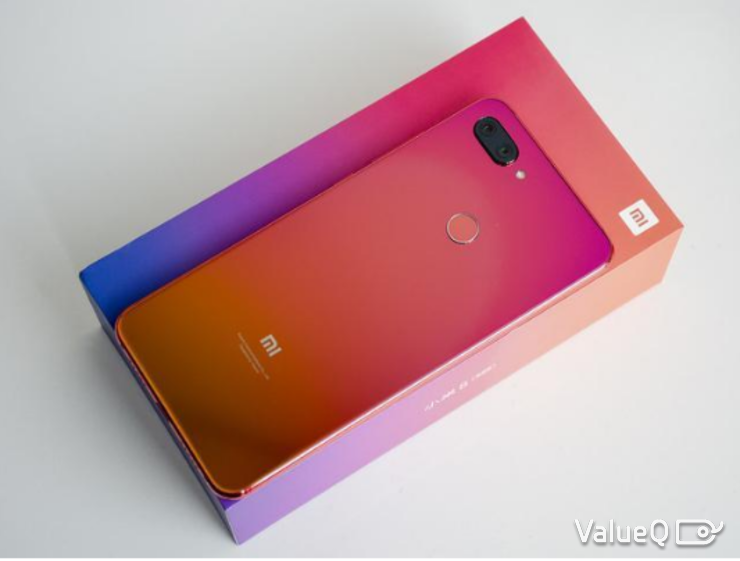
Before that, there were already three models of the Mi 8 line — the original model, Mi 8 SE and Mi 8 Explorer Edition. Many suggested that the Xiaomi Mi 8 Youth Edition will be a lightweight version of the Mi 8 SE, but we recommend to take it differently. In this article we will study the novelty in detail, we present to your attention a review of Xiaomi Mi 8 Lite.
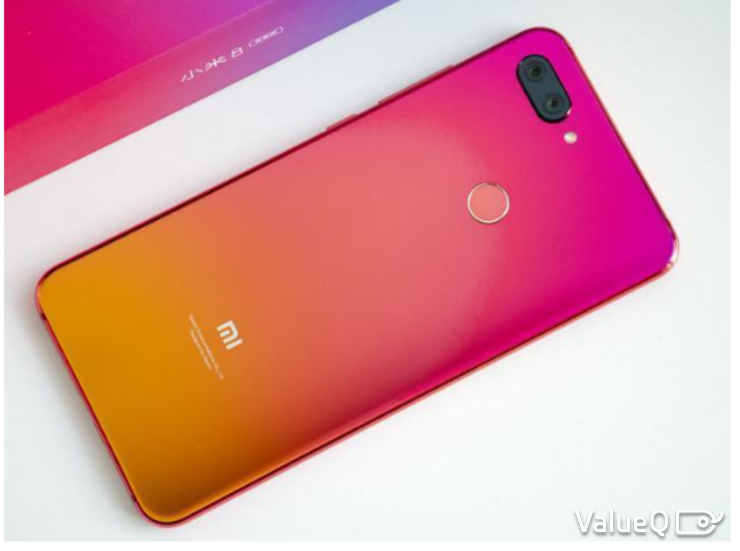
Appearance
Xiaomi Mi 8 Lite At the presentation of the device, Xiaomi paid attention to the new back panel, which is made of the now popular glass and gradient. The company introduced two new colours: Dream Blue and Twilight Gold. They should come to the liking of the youth, for whom this smartphone is designed. And if the second colour, Twilight Gold, is also available for Mi 8 Pro, then the first (Dream Blue) is exclusive to Mi 8 Lite so far. Colours look good not only on renders but also in reality.
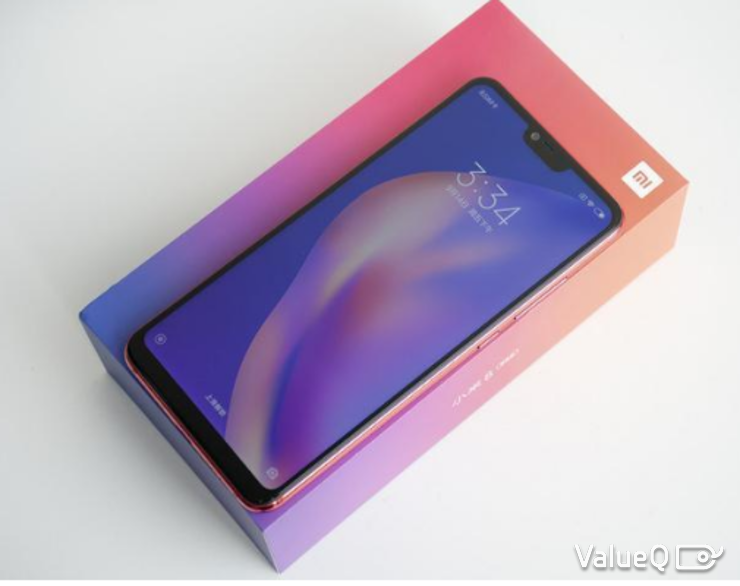
We suggest looking closer at the colour of Twilight Gold. To get the effect of the gradient, the company uses a vacuum nano-magnetron sputtering process. For the first time, such a solution was shown by Huawei with its P20. The upper part of the back of the smartphone is pink, and the bottom is golden. The designers used a combination of colours found in one of the paintings by Claude Monet. In the middle of the panel, the colours smoothly flow into each other.
The back of the Xiaomi Mi 8 Lite is covered with 2.5D curved glass, and the fingerprint scanner is framed with a metal ring. The camera module is horizontal, and it is very different from those in Xiaomi Mi 8 and Xiaomi Mi 8 SE. It uses a vertical design. In truth, the flat design of the camera is more aesthetic, but the taste and colour of all people are different.
Display
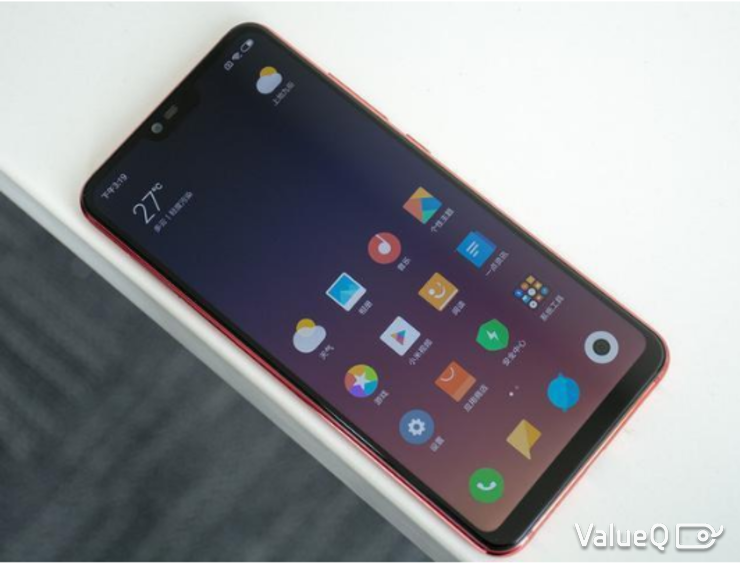
Having turned the smartphone on its face, we will see a 6.26-inch LCD display, its size is similar to the original Xiaomi Mi 8. Accordingly, it is slightly larger than that of its fellow Xiaomi Mi 8 SE. The aspect ratio of the screen is -19: 9, the resolution is 2280 × 1080 pixels. In terms of size, Xiaomi Mi 8 Lite is close to the original model. In the hands the smartphone feels good, thanks to the 2.5D design, it feels like a “remnant.
The height of the lower frame, under the screen, is similar to Xiaomi Mi 8, but the frames are much smaller. The company decided to abandon the advanced face scan module for this model. Thus, the ratio of the screen to the body of the Xiaomi Mi 8 Lite is higher than that of the Mi 8. On the other hand, not everyone likes having a bang in the smartphone, but if it is small, this is a plus.
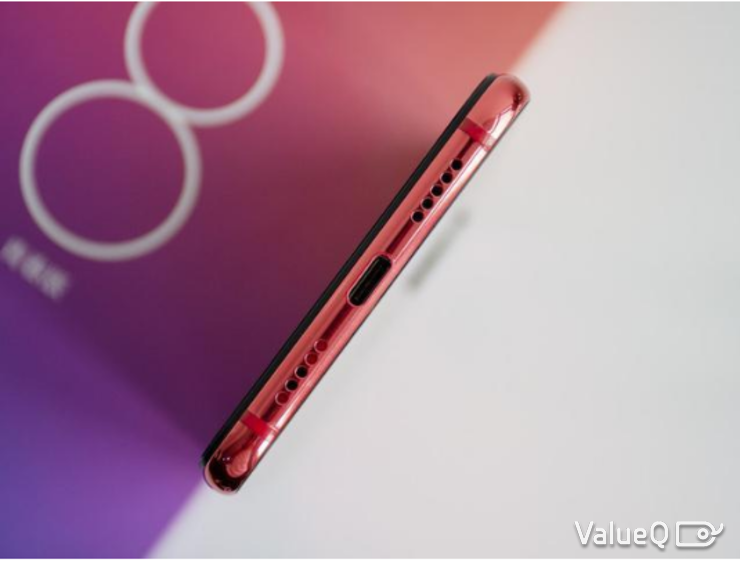
A USB Type-C connector with support for fast charging (Quick Charge 3.0) and a higher data transfer rate is located on the bottom of the smartphone. The device lacks a 3.5 mm audio jack, but an adapter with a Type-C to 3.5 mm jack that you find in the kit will solve the problem with the headphones. The sound, both in headphones and via Bluetooth, is quite good. However, we did not find any information about the support of the AptX codec. Another critical point: the sound from the speaker. This is a good, good mono sound.
Processor
Snapdragon 710 is built on a 10-nm process technology, it is equipped with two Kryo 360 cores with a frequency of 2.2 GHz and six Kryo 360 with a clock frequency of 1.7 GHz, as well as an Adreno 616 graphics processor. As for the Snapdragon 660, this is a 14-nm chipset, it combines four Kryo 260 cores with a frequency of 2.2 GHz and four Kryo 260 cores with a frequency of 1.8 GHz. The Adreno 512 GPU is responsible for the graphics, and the chip itself supports the X12 LTE Cat 12 strip. But it’s not as good as the Snapdragon 710, and that’s obvious. The 710th is a comparative new chip, but the 660th is already a year and a half old and 670 have appeared on the market.
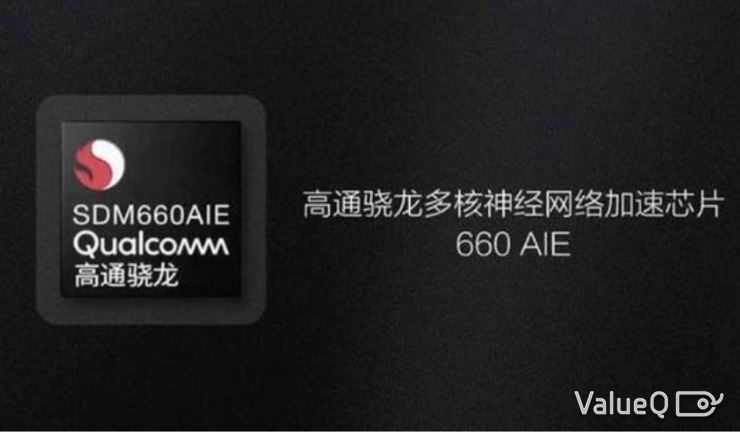
Qualcomm Snapdragon 660 is a chipset for mid-priced devices. It is more powerful than the popular 636th and even more so the 625th. This processor without problems pulls heavy games without a drawdown of fps, but at medium (and slightly higher) graphics settings. The interface works very fast and is not so much inferior to the flagship Snapdragon 845. Here price = quality.
AnTuTu Mi 8 Lite test results
In any case, by running the test of the antitude, we found out that the optimization of the performance of Xiaomi Mi 8 Lite is top notch. The test result AnTuTu reaches 143,000 points, which is better than other smartphones equipped with Snapdragon 660 AIE, Nubia Z18 mini or the same Mi 6X (Mi A2) for example. This was achieved thanks to the work of Xiaomi on optimizing the firmware.
Xiaomi Mi 8 Lite is equipped with 4 GB or 6 GB of RAM and 64 GB or 128 GB of permanent memory. Memory configurations are very standard. But the Xiaomi Mi 6X still has an option for 32 GB of memory, but this is a dubious decision, since the smartphone does not support Micro SD. In the minimum configuration, Mi 8 Lite is available only in black, and this is a minus.

Xiaomi Mi 8 Lite is the first Xiaomi smartphone with an integrated Vulkan API. Vulkan technology significantly reduces the load on the processor when running games. Thanks to them, work with multithreading is improved, which helps to use the multi-core capabilities of the processor to the full. At the same time, the rendering of lighting of game scenes and characters is improved, and also fps is generally increased. In general, the smartphone is completely suitable for games, which is what the company management tells us.
To optimize performance and power consumption, as well as improve image quality, the company worked closely with the Unreal Engine. As a result, we see 39 fps in the most difficult games, for example PUBG and Fortress Night.
Xiaomi Mi 8 Lite camera
On the back of the Xiaomi Mi 8 Lite is a camera module, consisting of two sensors: 12-megapixel and 5-megapixel. The main 12MP sensor is the Sony IMX363, which is also used in the original Mi 8 and Mi 8 SE. The pixel size is 1.4 µm, this ensures that more light is entering when shooting in low light conditions. Also, like other smartphones, it supports two-phase focusing.
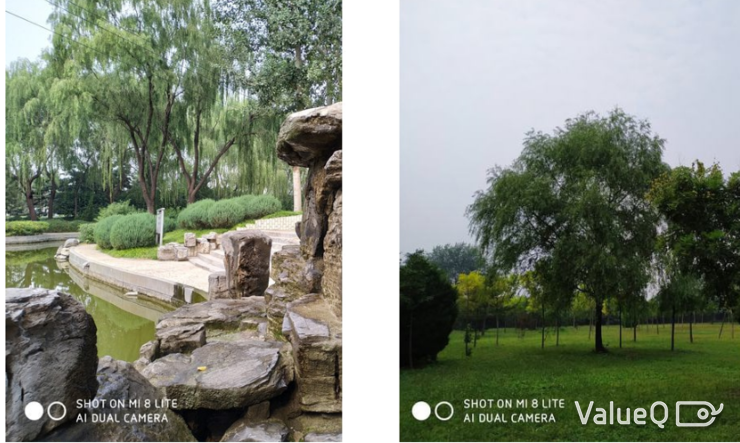
Xiaomi Mi 8 Lite supports a proprietary mode of artificial intelligence for photos, it identifies the scene of your photo, selects one of the many presets and applies. Often, this mode helps to make very good photos, it will be useful to those who, say, strenuously conduct their instagram. But sometimes he still makes mistakes.
As you can see from the examples of photos above, in practice the Xiaomi Mi 8 Lite takes quite satisfactory photographs. Even on a cloudy day, you will get consistently good pictures. In places with insufficient illumination, for example, with the light of lanterns or in the underground parking, the photos will not be so good and it is quite expected.
As you can see from the examples of photos above, in practice the Xiaomi Mi 8 Lite takes quite satisfactory photographs. Even on a cloudy day, you will get consistently good pictures. In places with insufficient illumination, for example, with the light of lanterns or in the underground parking, the photos will not be so good and it is quite expected.
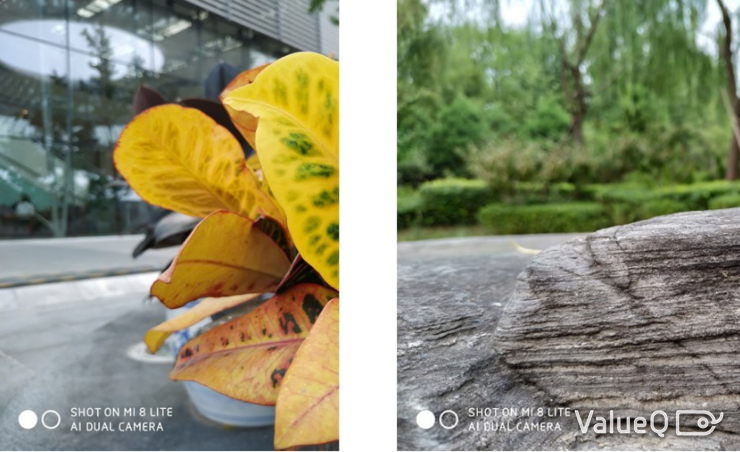
In the macro, the hero of our review takes a photo just as well as its closest competitors. On the whole, the Mi 8 Lite camera is a good, non-flagship level, but it copes with its tasks without any questions. On the camera, a smartphone plus.
Pros:
- Advanced design with unique body colors.
- Very high quality display.
- Really high speed.
- Great dual camera.
- Fingerprint scanner (built directly into the screen).
Minuses:
- There is no possibility to insert memory cards (no slot).
- The device is not protected from dust or moisture.
- The sound can not be attributed to the advanced.
…174 words left.
Thanks for your reading! If you want to know the remaining, please check ValueQ.
评论
发表评论